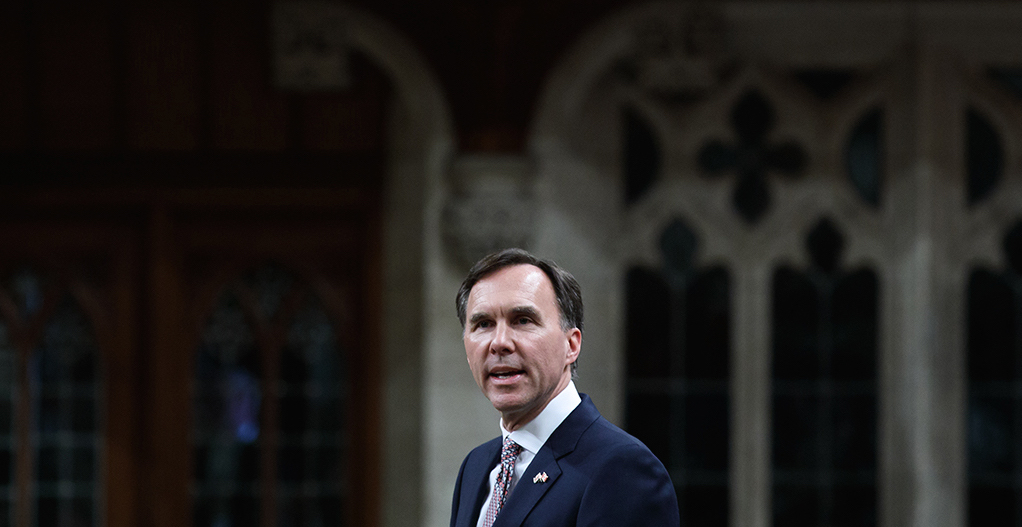The Trudeau cabinet, brimming with women and minorities, seems so 2017, so far removed from the traditional bastions of power.
Amid all that fresh-faced diversity, it’s easy to overlook the pale face of finance minister Bill Morneau — a rich, white male from Bay Street, ensconced in the cabinet’s most powerful post.
(Full disclosure: I ran unsuccessfully against Morneau in the 2015 federal election.)
Morneau hasn’t grabbed the limelight like some of the more flamboyant ministers. But, with the help of heavy hitters from Bay Street and Wall Street, he’s been quietly designing a radical new bank that will deliver some of Canada’s future infrastructure — roads, bridges, public transit, utilities — into the hands of private investors.
The Trudeau cabinet may have a New Age feel to it, but it’s by no means neglecting its Bay Street base, which stands to profit handsomely from Morneau’s proposed “Canada Infrastructure Bank” (CIB).
The bank is being presented to the public as a way to attract billions of private sector dollars to help pay for our public infrastructure.
But the bank’s unusual design will also, for the first time, give powerful private institutional investors — even foreign-owned entities — the opportunity to actually own important pieces of Canadian infrastructure, with the ability to charge us fees for using them.
Under the current model, Ottawa (or another level of government) typically owns Canadian infrastructure. In other words, we collectively own it.
But big institutional investors — pension funds, mutual funds, investment banks, etc. — are looking for investments that are safe and produce a reliable revenue stream.
Nothing fits that bill better, in these days of volatile markets, than investing in infrastructure, as a 2015 report by Wall Street giant JP Morgan documented. The report noted that, compared to other investment options, infrastructure assets offer very high returns, at very low risk, that they operate in monopoly situations free from competition and provide reliable revenue, even during economic downturns. “Infrastructure assets have produced stable, predictable and growing returns,” concluded JP Morgan.
The appeal of infrastructure investment was no doubt on the mind of Wall Street titan Larry Fink when he met Justin Trudeau in January 2016 at the annual power-gathering in Davos. Trudeau and his newly elected government were just developing ideas for their new bank, and Fink was looking for good investment opportunities for the $5 trillion in assets he manages as CEO of BlackRock, the world’s largest asset manager. (Fink now belongs to Donald Trump’s Strategic and Policy Forum.)
Trudeau and Fink hit it off. Since then, BlackRock officials have worked closely with Morneau and others inside the Trudeau government, raising concerns about the appropriateness of a major Wall Street financier — and powerful institutional investors inside Canada — apparently helping shape the design of a bank they will probably end up doing business with.
And while the investment community’s enthusiasm for Canada’s new bank is clear, it’s less clear what’s in it for Canadians.
When tolls and user fees are added in, privately owned infrastructure could cost us more — and we’d own nothing.
Whether privately or publicly owned, Canadians will still end up paying for these assets, note analysts Azfar Ali Khan and Randall Bartlett in a report for Ottawa’s Institute for Fiscal Studies and Democracy. “[T]his does beg the question: Why would Canadians want to sell their most valuable assets to the private sector?”
Another option would be for us to finance and own our own public infrastructure, as we have in the past. Now more than ever, there’s good reason to do so: Ottawa can borrow money at very low rates, much lower than the private sector. “With yields on 30-year Government of Canada bonds currently sitting around 2.2 per cent, the federal government can almost literally get ‘money for nothing,’ ” Khan and Bartlett note.
They urge more careful assessment before Canada starts “shovelling money out the door.”
Indeed, with sophisticated financiers working closely with government officials designing the bank, it could turn into a boondoggle for financial interests, with Canadians holding the short end of the stick.
Ontarians got a taste of that when the Tory government of Mike Harris was outsmarted by private investors into handing over the lucrative Highway 407 toll road in a 99-year lease, for just a fraction of its value.
In the case of the CIB, there are some whip-smart financiers involved, including Fink, a key player in squeezing money out of the American public to bail out Wall Street’s banks after the 2008 crash. What could possibly go wrong for Canada?
Linda McQuaig is a journalist and author. Her book Shooting the Hippo: Death by Deficit and Other Canadian Myths was among the books selected by the Literary Review of Canada as the “25 most influential Canadian books of the past 25 years.” This column originally appeared in the Toronto Star.




